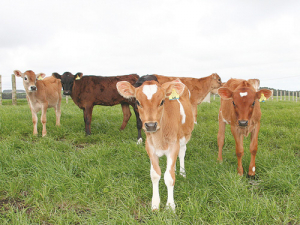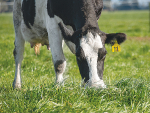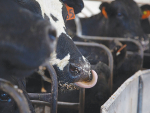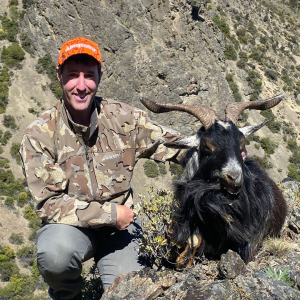Antibodies are the body’s defence force to attack viruses and bacteria that we come in contact with.
Calves are born without antibodies; it takes them four-six weeks to be able to make their own. This is when any viruses or bacteria they contact will seriously impact them because they won’t be able to quickly fight them.
You will notice that most of the sickness in calves, especially scours, all happens within those first four weeks. To protect them during this time they require antibodies from their dam to enter their bloodstream.
Unlike in humans, antibodies can’t cross the placenta so we need to get colostrum -- rich in antibodies if it’s good quality -- into them. This is done by these antibodies being absorbed through the intestine into the bloodstream. This sounds simple enough, but a calf’s ability for rapid absorption decreases over time, so you are racing the clock.
If the calves don’t get maternal antibodies in a high-enough concentration, i.e. if they don’t passively transfer, you will have a case of ‘failure of passive transfer’ (FPT).
Consequences of FPT:
If 31% mortality in first three weeks is due to FPT this relationship will persist until six months
If they get sick in first three months they will be three times less likely to calve >30 months vs not being treated.
Other studies suggest calves that got adequate colostrum had:
Decreased pre-weaning mortality
Decreased post-weaning mortality
Increased daily weight gain
Had 50% vet costs
Produced more milk in 1st and 2nd lactations.
The way to prevent this is by following the 3Qs of colostrum management. To prevent your calves from having FPT we need to balance the following:
Quickly
By 12 hours after birth the ability to absorb antibodies has significantly dropped, and at 24 hours absorption is non-existent. We have to get colostrum into them as fast as possible.
Quality
Antibodies are highest in the first milk produced by the udder; this is the true definition of colostrum. If cows have leaked milk then those antibody levels will not be as high. Age and genetics can also be factors, but do not be fooled into thinking that heifers have poor quality colostrum; more often than not their quality is great, mostly because the more a cow produces the more dilute the antibodies in the colostrum can be.
Hygiene is also important for colostrum quality. When the intestines are open for absorption of antibodies they are also more open for bacteria to get through. Also, antibodies can bind with bacteria when just sitting in the bucket, making them unavailable for absorption if your colostrum is contaminated.
We are always looking for ‘gold’ looking colostrum, but it is hard to tell how good it is without testing it. The best way to ensure quality is to practise good hygiene for colostrum collection (i.e. no mud-covered teats and dirty test buckets) and to use a Brix refractometer to test antibody levels. This simple device takes a sample of the colostrums and when you hold it up to the light it will give you a level. The level we are looking for is at least 22%.
Quantity
It has been common practice for some time to give each new calf 2L of colostrum, either by tubing or by getting them to suckle on a bottle of feeder. The amount of colostrum feed should be based on how many hours from birth the calf is and the quality of the colostrum you are feeding. The general rule is 10-12% of a calf’s birth weight in the first 12 hours. I would challenge farmers to weigh some of their newborn calves; they might be a lot bigger than 20kg.
A recent study by Emma Cuttance looked at the level of FPT in New Zealand. They found on average 33% of calves had FPT but those results ranged onfarm from 5% to 80%. So it is important to see where your farm sits. To do this, 12 blood samples are taken from your calves and are tested. Most vet practices can get results back to you within 24 hours.
This article was brought to you by Virbac - Shaping the future of animal health.


















